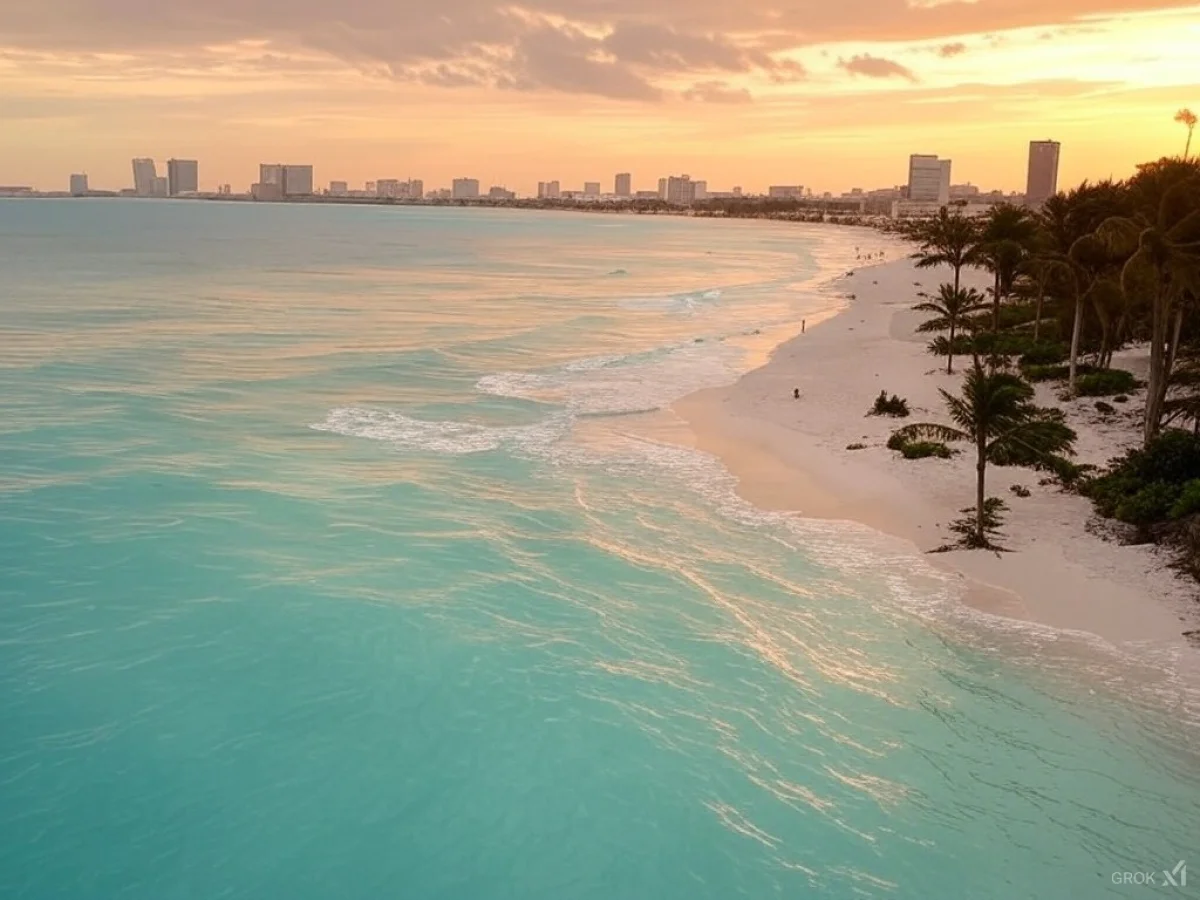Istanbul, a city straddling two continents, offers an unparalleled blend of history, culture, and modernity. Whether you're drawn by its rich heritage, bustling bazaars, or vibrant nightlife, timing your visit can significantly enhance your experience. So, when is the best time to visit Istanbul, and what should you do while you're there? Here's a detailed guide to help you plan the perfect trip.
When Is the Best Time to Visit Istanbul?
The best time to visit Istanbul is April. This month brings mild weather, blooming flowers, and a vibrant atmosphere, making it perfect for exploring the city. The Istanbul Tulip Festival, held every April, transforms parks and gardens into a colorful spectacle, offering a unique cultural experience.

April’s pleasant temperatures, averaging between 15°C to 20°C (59°F to 68°F), are ideal for outdoor activities like walking tours and Bosphorus cruises. Additionally, it’s a quieter time compared to the peak summer months, allowing visitors to enjoy iconic landmarks like Hagia Sophia and the Blue Mosque without overwhelming crowds. The combination of natural beauty, comfortable weather, and cultural events makes April the perfect time to experience Istanbul.
Top Things to Do in Istanbul
Regardless of when you visit, Istanbul has countless attractions and activities to keep you engaged. Here are some must-dos:
1. Explore Historical Landmarks
- Hagia Sophia: Once a church, later a mosque, and now a museum, this architectural marvel is a testament to Istanbul’s rich history.
- Blue Mosque: Famous for its stunning blue tiles and impressive domes.
- Topkapi Palace: Dive into Ottoman history and marvel at the treasures of sultans.
- Basilica Cistern: A mystical underground structure with beautifully lit columns.
2. Stroll Through the Grand Bazaar
One of the oldest and largest covered markets in the world, the Grand Bazaar is a paradise for shopping enthusiasts. From carpets to spices, you’ll find unique souvenirs here.
3. Take a Bosphorus Cruise
A cruise along the Bosphorus Strait offers breathtaking views of Istanbul’s skyline, iconic bridges, and waterfront mansions.
4. Visit Galata Tower
Climb to the top of this medieval stone tower for panoramic views of the city.
5. Discover the Asian Side
Take a ferry to Kadıköy or Üsküdar for a more local experience. Enjoy the vibrant markets, trendy cafes, and scenic seaside promenades.
6. Indulge in Turkish Cuisine
Street Food: Try simit (Turkish bagel), balık ekmek (fish sandwich), and köfte (meatballs).
Traditional Dishes: Don’t miss manti (Turkish dumplings) and iskender kebab.
Desserts: Savor baklava and Turkish delight, paired with a cup of strong Turkish coffee.
7. Relax in a Turkish Hammam
Experience the traditional Turkish bath for a rejuvenating and cultural treat.
8. Attend Cultural Events
Check out Istanbul’s vibrant arts scene. The Istanbul Biennial (held every two years) and various music festivals offer unique cultural insights.
Tips for Visiting Istanbul
- Plan Ahead: Book tickets for major attractions online to avoid long queues.
- Public Transport: Use the Istanbulkart for affordable and convenient travel on buses, trams, and ferries.
- Stay Central: Consider staying in areas like Sultanahmet for easy access to historical sites or Beyoğlu for a more modern vibe.
- Dress Modestly: When visiting mosques, dress modestly and carry a scarf if you’re a woman.
- Be Prepared to Walk: Istanbul’s streets are often hilly, so comfortable shoes are a must.
The best time to visit Istanbul is April. This month offers the perfect balance of pleasant weather, cultural events, and manageable crowds. Whether you’re a history buff, a foodie, or someone seeking breathtaking views, Istanbul in April is a magical experience that captures the essence of this timeless city. So pack your bags and get ready to explore this magnificent destination!
Factors Influencing the Best Time to Visit Istanbul
1. Introduction to Istanbul
Istanbul, also known as Byzantium and Constantinople, is the most populous city in Turkey and the country's economic, cultural, and historic center. It is a transcontinental city located on both sides of the Bosporus, the narrow strait between the Black Sea and the Marmara Sea that separates the continents of Europe and Asia. With a total population of around 15 million residents in its metropolitan area, Istanbul is one of the world's largest cities. It is also considered a world city and ranks as the world's seventh-largest city proper and the largest European city. Founded under the name of Byzantion on the Sarayburnu promontory around 660 BCE, the city grew in size and influence, first as both the capital of the Roman Empire and a related city of the pro-Roman moderating countries, soon again as the capital of the Eastern Roman Empire, and later as the capital of the Ottoman Empire. Throughout its long history, Istanbul has served as a major crossroads and hub for different populations of different continents, religions, and ethnicities. It has been called "Rome of the East" as well as "Rome of the West." With several truly unique landmarks, most of them centuries-old – from the 3rd-century grand prix track to several 5th-century Byzantine churches, 15th-century mosques, as well as 19th-century palaces and mansions – there’s something for everyone in Istanbul.
2. Climate and Weather Patterns
The best time to visit Istanbul depends on several factors, including the city's climate and what you'd like to do during your stay. The city enjoys four distinct seasons in a typical Mediterranean climate. Summers are hot and dry and generally last from early June to September. Winters are cold, damp, and the wettest time of year, typically from November through February. Fall and spring offer milder temperatures and less rainfall than peak seasons. The average low temperature ranges from lows of 3°C in January to highs of 7°C in January and February. The city experiences an average of 190 days of rain annually, with the rainiest months of December and January seeing up to 90 millimeters of rainfall. Annual average humidity ranges from 53% up to 88% with maximum humidity in December.
Summer, as well as the time between the first and second weeks of October, are the busiest times to visit the city. When school lets out for the summer, many regional residents flock to the beaches. Winter can be cold and drizzly due to the winds from the Black Sea, though it's generally bearable. It's a good idea to pack winter coats and a few layers if planning to visit during the colder months. The milder fall months and the temperatures during spring are typically more comfortable with the least amount of precipitation and humidity. Many outdoor sites and activities in Istanbul are usually closed during the colder winter months, which is one major drawback. These chilly months are among the best times for bargain travelers to visit, as flight and hotel prices tend to be much lower in comparison to the summer and milder months.
3. Peak Tourist Seasons
Istanbul is a top travel destination for tourists from almost any country around the world. The constantly growing number of visitors and travel statistics regarding Istanbul clearly support this. The best times are the peak seasons, which are the most crowded and most expensive in hotels, but also the ones with Istanbul's most dramatic, lively, and colorful atmosphere. The fall in numbers during off-peak or shoulder seasons has resulted in low rates, especially for 4- and 5-star hotels, and a distinctly milder and less crowded environment. As a result, the choice of the best time for visiting Istanbul must be connected to several criteria. Generally speaking, we divide the business into the high and low seasons, precisely studying how schedules and holidays, weather, number and nationalities of tourists, and the resulting hotel prices are affected by that.
The most popular times for traveling fall into the high season, during which over five million tourists come to Istanbul annually. This period includes the month of Ramadan and the following religious holiday, then travels to Eastern Europe by either land or domestic flights starting in June and through September, with a peak from mid-August to the end of the month. Finally, people come from Western nations in the fall and through the Christmas season.
4. Special Events and Festivals
In a city as lively as Istanbul, there is never a month that goes by without a special event or a festive celebration taking place. In a way, timing your visit to Istanbul around some of these special events and festivals can help you make the most out of your trip because these occasions can provide fun and surprising glimpses into local culture and everyday life. This way, you can experience traditions and practices peculiar to Istanbul and Turkey on a very deep level.
Some of the main events celebrated annually throughout Istanbul are Ramadan, the five-day holiday at the end of Ramadan, and Turkish Republic Day on October 29. While they are public, the two nationwide religious holidays are celebrated with various communal activities expanding across religious and social institutions. Many Turkish institutions are also closed for a week in July to commemorate the holiday. The Istanbul boroughs of Büyükçekmece and Kadıköy also host a Twinning Festival in May. While the numbers may be like other crowds in Istanbul, keep in mind that these events and festivals occur annually and repeat themselves in the same manner, but based on a lunar and solar calendar, which means that their place coincides with different months every year.
5. Personal Preferences and Travel Goals
The most critical factor affecting the best time to visit Istanbul is indeed one's personal travel preferences or travel goals. Which one is more important to you: to interact with locals or check out the city? Visitors who are searching for specific experiences have distinct preferences. So whether you should take your vacation in spring, summer, autumn, or winter, the most appropriate date for your vacation would be determined by your responses to a few simple questions. The decision is yours regarding your goal: in order to luxuriate, to explore, or to partake in celebration. There is no one-size-fits-all solution. Reflect on yourself and your family when making your vacation choices: When is your vacation time? Is your budget for this trip restricted? Is the purpose of your visit to Istanbul culture? Are you looking for a pleasant voyage or do you desire adventure? Are you interested in historically significant festivals and events? Would you prefer to visit when the crowds are thin? Seasons and atmospheres can be quite different depending on your travel dates. There is no objective response to the question "When is the finest time to visit Istanbul?" What is regarded as the greatest time of year to see Istanbul will depend on the individual's travel preferences and objectives. In fact, the bulk of traveling is about personal choices and judgments. Although some people would argue that spring and autumn are the finest periods of the year to visit Istanbul, each traveler would be best visited at a variety of times due to different desires and plans in mind.








